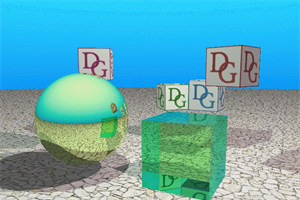- home
- articles
- quick answersQ&A
-
discussionsforums
- CodeProject.AI Server
- All Message Boards...
- Application Lifecycle>
- Design and Architecture
- Artificial Intelligence
- ASP.NET
- JavaScript
- Internet of Things
- C / C++ / MFC>
- C#
- Free Tools
- Objective-C and Swift
- Database
- Hardware & Devices>
- Hosting and Servers
- Java
- Linux Programming
- Python
- .NET (Core and Framework)
- Android
- iOS
- Mobile
- WPF
- Visual Basic
- Web Development
- Site Bugs / Suggestions
- Spam and Abuse Watch
- featuresfeatures
- communitylounge
- help?
Everything / Game Development
Game Development
game
Great Reads
by Marcelo Ricardo de Oliveira
A shoot'n'up HTML5 game made with Phaser game framework
by Adam David Hill
All the juicy tricks and scandalous shortcuts which helped us ship our competition game on time
by CMalcheski
Thinking outside the box can result in critical performance gains
by Petar Brkusanin
An example of how Decorator,
Latest Articles
by Sbk123
This is a multi player Pong game written in C#/
by Malcolm Arthur McLean
How to generate random dungeons,
by EgorYusov
This article introduces Diligent Engine,
by honey the codewitch
Display automated (optionally controllable) Tetris on an LCD or Neopixel panel
All Articles
26 Nov 2017 by
A shoot'n'up HTML5 game made with Phaser game framework
4 Oct 2017 by CMalcheski
19 Nov 2022 by KristianEkman
An online Angular, .NET 7 Web API, SQL Server on Azure backgammon game
14 Apr 2021 by Anurag Gandhi
27 May 2020 by Theo Kand
7 Nov 2022 by Terence Wallace
24 Jun 2019 by Thomas Daniels
This article describes the making of a tic tac toe player that uses neural networks and machine learning.
7 Apr 2017 by Marco-Hans Van Der Willik
This article continues with the development of the SOLID Poker project, and covers functionality to Compare and Validate Poker Hands.
15 Jul 2021 by Steve Hoult
27 May 2014 by Mohd Akram
4 Jun 2012 by Manas Bhardwaj
First part of an attempt to create Snake and Ladders using HTML5.
26 May 2015 by Vahe Karamian
21 Nov 2017 by Tobs88
13 Mar 2019 by Oana Mancu
Any deterministic game can be broken down to its core functionalities. By understanding them, one can implement fundamental algorithms such as Minimax (with alpha beta pruning), thus paving the way towards a better AI opponent.
31 Jul 2012 by Kenneth Haugland
8 Sep 2017 by CoderGirl42
21 Nov 2017 by Tobs88
8 Feb 2021 by Uzi Granot
If you are a programmer that tried to introduce a kid to programming with Scratch, this article is for you. Comparing a simple game between Scratch and C#.
2 Sep 2014 by Simon Jackson
16 Feb 2024 by Jo_vb.net
6 Jul 2021 by VisualMonsters
2 Dec 2011 by Vasily Tserekh
23 Jun 2015 by Kel_
A game of life "MMO", with a persistent simulation running on the server.
6 Dec 2019 by Vahe Karamian
25 Dec 2023 by Peter Huber SG
30 Aug 2010 by paladin_t
Use Twiggery as JavaME Game Scripting Language
1 May 2016 by Majdi Sobain
15 Apr 2016 by Android on Intel
Whether you are looking for an entire game engine to develop your idea into a game, or an efficient easy-to-use video codec to deploy full motion video, this list will guide you to the best middleware to use while developing your game for Intel® architecture.
14 Apr 2019 by Christ Kennedy
10 Dec 2020 by André Marcos (Advisor), LaercioMBR
17 Nov 2022 by André Marcos (Advisor), José Cláudio Silva, Victor Lopes
This work proposes the development of a Raycast engine in JavaScript to facilitate the 3D game development.
29 Mar 2023 by gggustafson
4 Feb 2011 by Scott Philip Brown
10 Oct 2016 by Ashley Davis
A look at version control from the game developers perspective
22 Dec 2018 by EgorYusov
23 Nov 2021 by Raphael Mun
In this article, we explore packaging then deploying a game to Azure PlayFab servers.
31 Aug 2011 by pierre poliakoff
A tutorial on how to write a Silverlight game based on the classical Pong game.
8 Sep 2012 by Asame Imoni Obiomah
3 May 2013 by TYoungjr
17 Jan 2014 by Paul Lindberg
This case study details how the game takes best advantage of low-power systems, while still scaling up to look and run fantastic on more robust systems.
28 May 2014 by Dr. Michael J. Gourlay
This article—the 17th in the series—describes how to identify a fluid surface. You can use this information to render the surface or to help compute surface tension.
1 May 2015 by Intel
26 May 2015 by Intel
6 Jul 2015 by Android on Intel
This article shows how to analyze and improve the performance of a mobile game and how to optimize graphic resources for a mobile platform, using mTricks Looting Crown as an example.
31 Jul 2015 by Android on Intel
15 Apr 2016 by Android on Intel
15 Apr 2016 by Android on Intel
11 Oct 2019 by Christ Kennedy
9 Sep 2013 by Marcelo Ricardo de Oliveira
17 Oct 2012 by Florian Rappl
11 May 2018 by Marcelo Ricardo de Oliveira
Most of the examples using Blazor I've seen so far include some simple pages, buttons and forms. So I decided to investigate whether it would work with my old Bricks game to help explore WebAssembly.
12 Apr 2011 by Vinit Yadav
13 May 2015 by Mike Oberberger
16 May 2011 by Marcelo Ricardo de Oliveira
1 May 2011 by Patrick Kalkman
11 Jul 2010 by Marcelo Ricardo de Oliveira
31 May 2016 by Thomas Daniels
How to create a maze with a digital timer using HTML5 and JavaScript, without the use of Flash
10 Nov 2010 by gtdelarosa
Various methods for using quaternions in ways that maximize performance
10 Jan 2015 by Dan Thyer
2 Jan 2024 by Jacques Fournier
31 Jan 2012 by Marcelo Ricardo de Oliveira
7 Feb 2017 by O.G.I.
8 Apr 2014 by Florian Rappl
12 Jan 2012 by Shai Raiten
15 Jan 2015 by Guruprasad.K.Basavaraju
An MVC application to make a copy of CodeProject articles in your Browser Cache using HTML5's AppCache feature
4 Aug 2015 by syed shanu


























































































